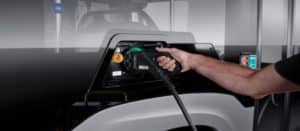Keolis and Netexplo – global vision for mobility in the digital age
Keolis and Netexplo – global vision for mobility in the digital age
Keen to establish itself as a pioneer in fully understanding people’s mobility needs all over the world, public transport provider Keolis already carries out an annual review called Keoscopie. This year, it has extended these investigations with a global study.
This April 2017, the group announced the results of its international digital mobility observatory, in partnership with Netexplo.
Covering 13 cities across five continents, the study explores how digital technology is impacting the way people use public transport and the kinds of services they appreciate.
The findings throw light on three key expectations, shared by all passengers irrespective of their location or cultural background:
- Real-time updates
Whether looking for timetables, service availability, tailored journey plans, or alternate routes in the event of service disruptions, passengers want up-to-the-minute information and transport solutions - Personalised mobility solutions
Passengers are no longer satisfied with generic travel information. They want tailored information that responds to their travel needs and situations at any given moment. This reflects the trend of shifting from a mass-transit focused approach to one of personalised, ‘user-centric’ mobility - Step-by-step directions
Passengers are also looking for door-to-door guidance, covering every stage of their journey
The 13 cities in developing and developed countries targeted by the research were Abidjan, Boston, Dubai, Hong Kong, Hyderabad, London, Lyon, Melbourne, Montreal, Sao Paulo, Shanghai, Stockholm, and Tokyo. The study identified 400 digital solutions, from the most mainstream and established through to the most innovative and disruptive.
Ten fundamentals for a positive travel experience
Based on these three common expectations, Keolis identified 10 fundamentals for a successful passenger experience and grouped them into three ‘pillars’:
PLANNING THE JOURNEY
Guidance, information, multi-modal transport, and ticketing – e.g. app functions to personalise the travel experience beyond the basics (which mode, departure times, where is the platform, what is the number of the bus or tram, etc.) to include real-time updates, contextualised information such as, for example ‘the station is located to the left of such-and-such shop’ as you exit, and the possibility of alerting one’s boss or childminder if your transport is running late – Email-my-Boss (South Africa), YoTrain! (New York), or Mapway (London, Mexico City, Toronto, New York, Paris and Barcelona)
STRESS-FREE TRAVEL
Assistance, productive travel time, and safety – e.g. dedicated services via a ‘help’ function for the most vulnerable (women in the evenings, children, mobility impaired travellers). In Singapore, the Watch Over Me app turns Android phones into emergency tool with just a shake: ‘Even if your phone is locked, with one shake we turn on your phone’s alarm, and video camera, and send an alert to your emergency contacts’
A MORE ‘HUMAN’ TRAVEL EXPERIENCE
Communication channels, personalisation, and collaboration – e.g. apps such as the ‘Bouchomètre’ in Abidjan and one for detecting air quality in Santiago du Chili

Reaching out
The results of this research confirm Keolis’ strategy to step beyond its traditional role of transport network operator. Over the coming years, the group is keen to become a/the leader in digital mobility and an integrator of everyday mobility solutions.
This ambition reflects changes in the public transport sector at large. Changes due in part to public expectation for a more passenger-orientated and personalised travel experience. Not only are established operators looking to (and, to a certain extent obliged to) branch out, but the lines are blurring between themselves, organising authorities and pure digital players new to the market.
“Mobility underpins the life of a community,” said Jean-Pierre Farandou, executive chairman, Keolis. “Digitalisation is transforming the use of public transport and bringing new solutions with the arrival of new players.”
Both high and low tech (smart and collaborative solutions) developments are creating added value to services. Our relationship with the car is evolving towards a shared experience characterised by intelligent interaction and connectivity with the rest of the mobility chain (multi-modality). In this context, going forward Keolis sees itself managing fleets of shared self-driving taxis.
Already today, with its Le Cab subsidiary, a direct trip with others (no detours, passengers walk a short way to a virtual pick-up point identified via mobile app in real time) costs just €5.
Tomorrow, without a driver in the picture this trip will cost around €2.5, a fare that will really squeeze the price gap between this kind of mobility and that offered by the traditional bus, tram or metro. Mr Farandou: “Yes, it’s a transport mode that will undoubtedly gain significant shares of the market. The challenge will be to pre-position fleets of self-driving vehicles to fit in with anticipated demand.” Keolis is preparing for this scenario thanks to its knowledge of customer expectations and strategic investments in start-ups such as Le Cab and Navya.
“Together [with transport authorities] we are building the future of smart mobility,” sums up Mr Farandou.
Enregistrer



